The urban meadow: For small, budget-conscious gardens
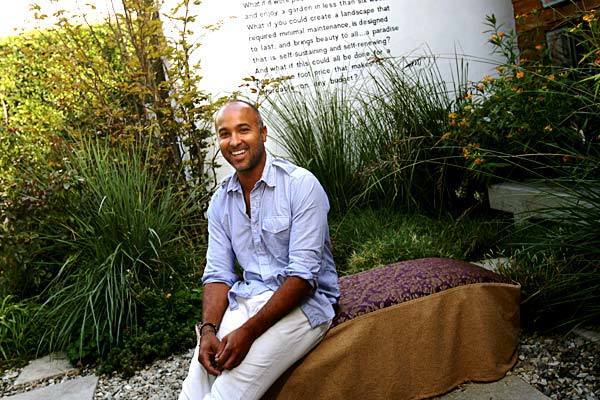
Call it the modern urban meadow. After two decades of gardening, landscape designer Sean Knibb has come up with a formula for lush but water-wise, small-scale city gardens.
Lawns are replaced with gravel, concrete pavers and low, mounding grasses nestled among ornamental varieties such as paspalum, shown here, beneath the writing on the wall behind Knibb. Traditionally separated cutting beds, vegetable patches and herb gardens are abolished. Succulents, shrubs, such as the yellow milkweed (far right), flowers and edibles all mingle in the same beds.
“Part of the aesthetic is to capture the look of where prairie meets forest,” Knibb says. “The layering that happens in nature is the coolest thing.”
We recently toured three of Knibb’s Los Angeles installations, each created from a palette of tough but showy plants and basic hardscape materials. Here, in the garden of his office and outdoor furniture showroom, Knibb sits on a slip-covered bale of hay that serves as a bench. (Keep clicking to see what he’s done and close-up looks at some of the flowers.) (Ann Johansson / For The Times)
Landscape designer Sean Knibb believes in mixing up plants, flowers and vegetables.
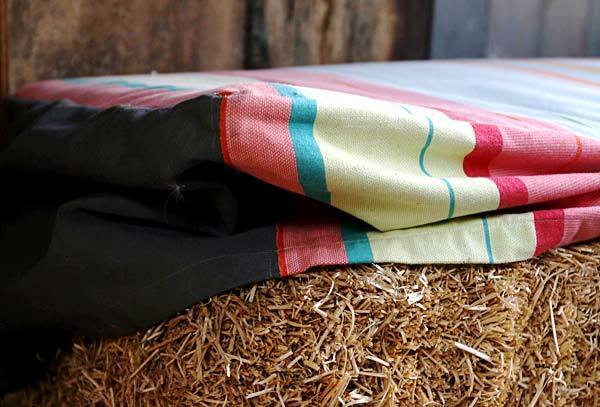
Emphasizing sustainable and recycled materials, Knibb created a slipcover for standard hay bales. They are sold for $270 (hay included) at his outdoor furniture showroom on Abbot Kinney. (Ann Johansson / For The Times)
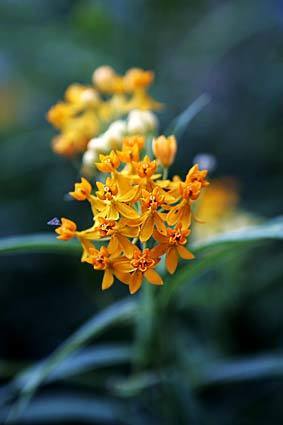
In Knibb’s showroom garden, a close-up of a yellow asclepias, a variety of milkweed, also known as butterfly weed, which Knibb frequently uses in gardens. “It’s fast-growing, has showy flowers, interesting seed pods and attracts butterflies,” he says. (Ann Johansson / For The Times)
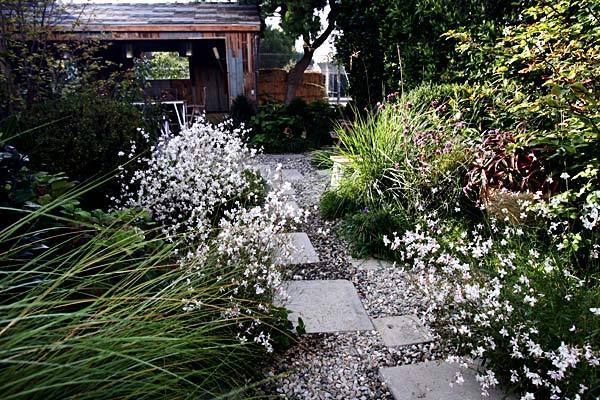
A walkway of square recycled concrete pavers and gravel arranged to resemble a city skyline leads from Knibb’s office to a dining area made from reclaimed lumber. Inspired by the renewed interest in prefabricated housing, Knibb says his small-space, budget-conscious gardens sprang from an attempt to create a design template that is “as close to a kit as I can make it.” The gardens contain some four-dozen low-maintenance plants that provide year-round color and interest surrounded by basic hardscape materials that can be configured in a variety of ways.
Here, boxwood and oak leaf hydrangea grow against the side of the structure. Knibb used beech trees to anchor the beds that flank the path. The beds contain a profusion of white guara and purple flowering verbena. (Keep clicking to see them up-close.) (Ann Johansson / For The Times)
Advertisement
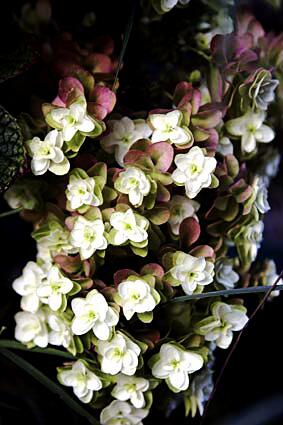
Oak leaf hydrangea is one of the English garden flowers that remind the 40-year-old Jamaican-born Knibb of his grandmother. “It’s like a beautiful old-time chenille,” he adds. (Ann Johansson / For The Times)
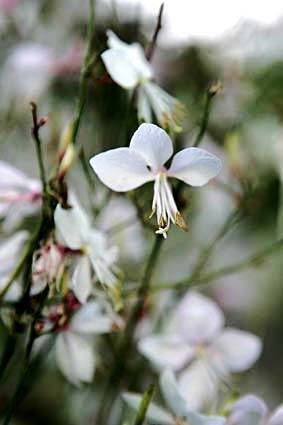
Gaura flowers rise on thin stems and bear a resemblance to swallow-tailed butterflies. They have a long blooming season, notes Knibb, “and flutter in the breeze like a beautiful woman’s eyelashes.” (Ann Johansson / For The Times)
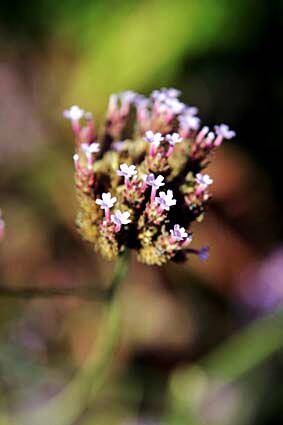
Verbena bonariensis, commonly known as Purpletop Vervain, is one of Knibb’s favorite flowers. “It sends up flowers 3 to 4 feet in the air, and when you look at it from afar, it looks like little blue buttons floating in the air.” (Ann Johansson / For The Times)
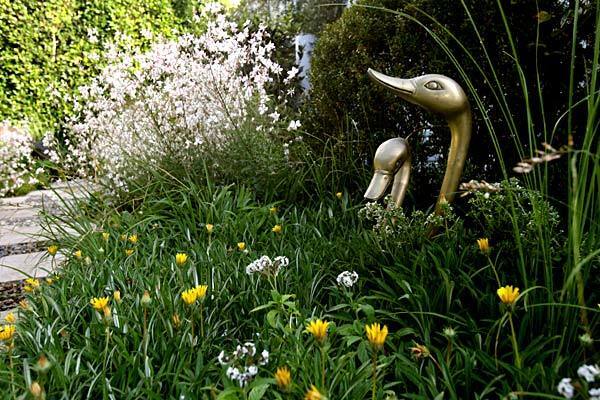
Brass ducks nestle amid grasses, yellow gazania, white heliotrope (which has a vanilla scent), and -- under the statues’ necks -- oregano, which has been allowed to flower. The tall grass to the far right is andropogon, familiarly known as big bluestem. (See its amazing flower next.) (Ann Johansson / For The Times)
Advertisement
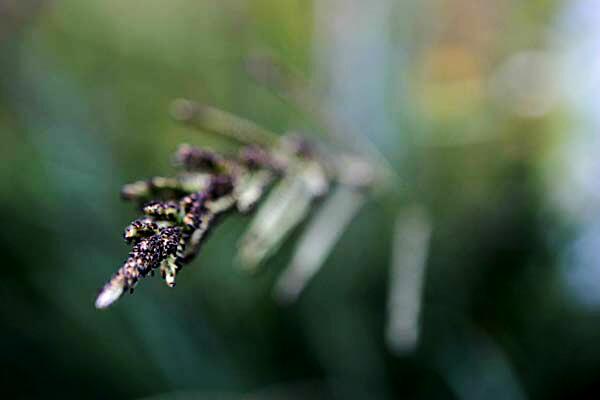
Andropogon flowers have earned the plant another nickname: turkey foot. In addition to this unusual blossom, Knibb values the plant for “its terrific soft blue-green color, its height and volume and the way that it falls over softly like a fountain.” (Ann Johansson / For The Times)
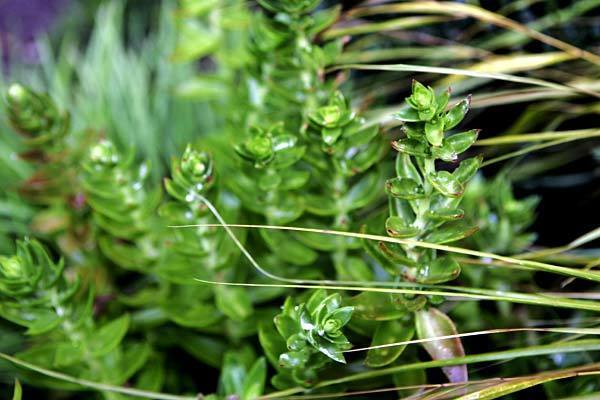
Campfire crassula is one of the many succulents that are woven into Knibb’s garden. “Once they get to where they want to be, they are structural, sculptural details that you discover as you look around,” he says of succulents. (Ann Johansson / For The Times)
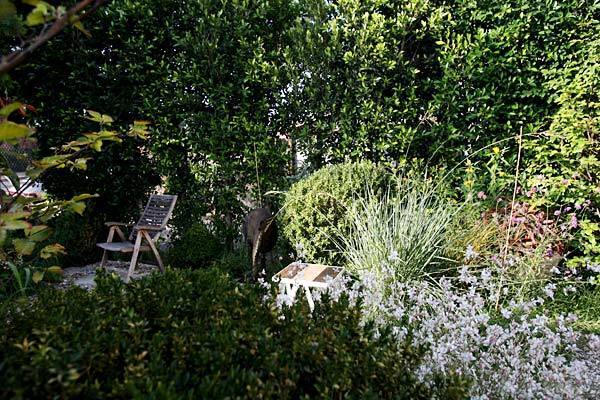
Ficus hedges at the back edge of the wall provide privacy for a sitting area defined by a single vintage wooden chair. In the center, the low table is one of Knibb’s furniture designs made from salvaged wood planks in a powder-coated frame. (Ann Johansson / For The Times)
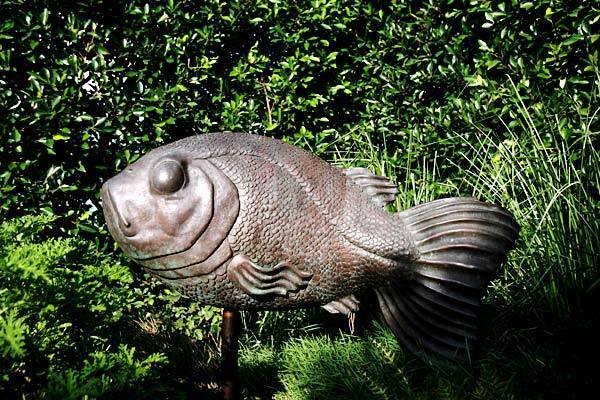
Sculpture adds instant interest to gardens, Knibb says. Here is one of two bronze fish by Malibu potter Carl Gillberg. Surrounding the sculpture are rose-scented geranium, from left, sesleria (moor grass) and paspalum. (Ann Johansson / For The Times)
Advertisement
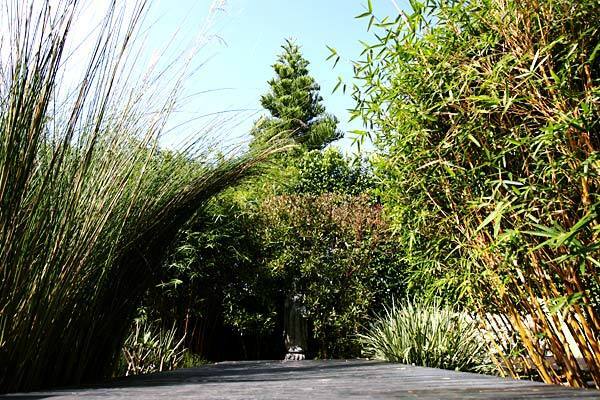
For Ling-Su Chinn, owner of the Planet Blue clothing boutique, Knibb built a recycled wooden catwalk deck flanked by a towering stand of miscanthus junceus and plumeria, left, and variegated dietes (fortnight lily) and yellow bamboo. (Ann Johansson / For The Times)
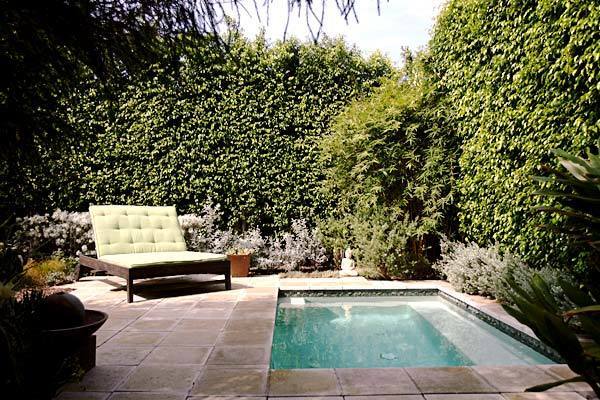
The wooden runway separates Chinn’s Mar Vista yard. On one side is a private sunning area with a plunge pool. The low silvery blue shrubs on both sides of the Buddha statue are silver anniverary buddleia and varieties of westringia. (Ann Johansson / For The Times)
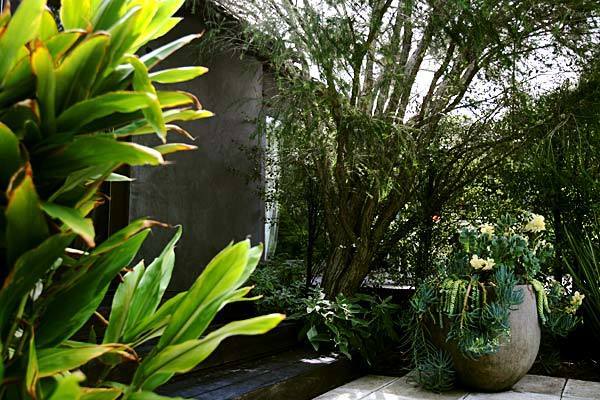
The other side of the wooden deck is a public space, accessed through the living room, for entertaining. To add a tropical feeling, Knibb added white ginger, left. The large tree is a melaleuca (myrtle), “the finest textured leaf tree you can get,” says Knibb. In the concrete planter, right, is a mix of succulents: crassula and trailing senecio and burro tail sedum. (Ann Johansson / For The Times)
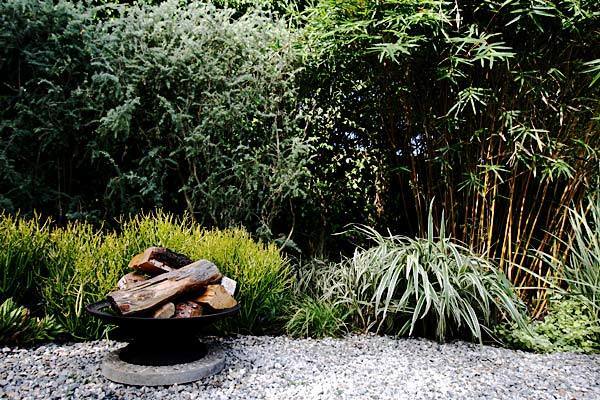
At the other end of the public space, a fire pit sits on Knibb’s signature bed of gravel. Behind it are crassula, from left, dianella tasmanica variegata (Tasman flax lily), prized for its broad white stripes, and chartreuse helichrysum limelight (licorice plant). (Ann Johansson / For The Times)
Advertisement
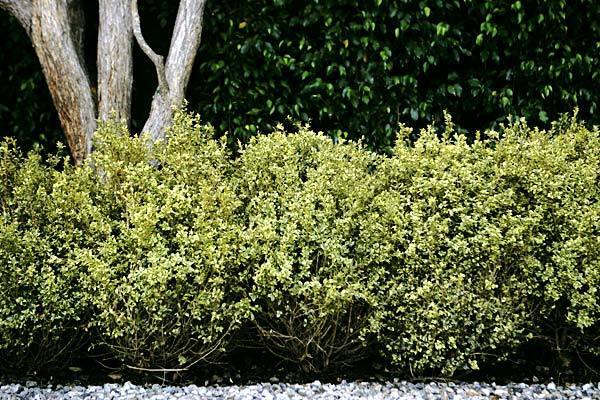
Not all of Knibb’s layering is complex. Here, he defined the edge of Chinn’s garden with a bed of gravel, boxwood bushes and a tall ficus hedge. (Ann Johansson / For The Times)
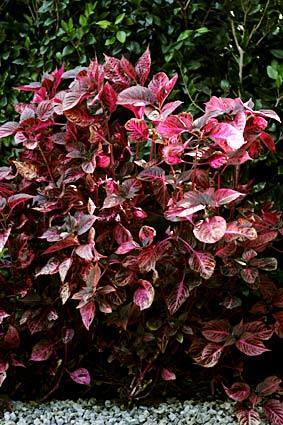
For a blast of color, Knibb added the fuschia and burgundy Iresine herbstii bush (also called chicken gizzards) to a bed with the euphorbia crown of thorns. (Ann Johansson / For The Times)
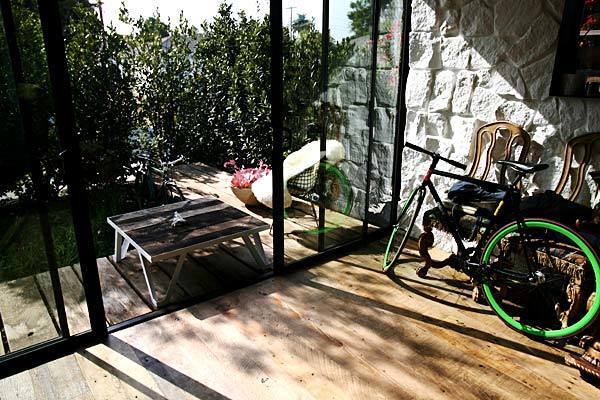
At his own home in Venice, Knibb built a reclaimed wood deck. Beyond it a hedge of bay laurel screens the side of his frontyard. (Ann Johansson / For The Times)
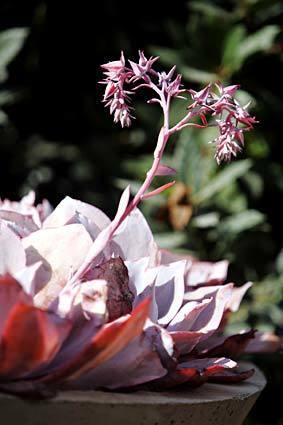
On his deck, Knibb filled a minimalist concrete planter with adenanthos (woollybush) and echeveria, shown here. (Ann Johansson / For The Times)
Advertisement
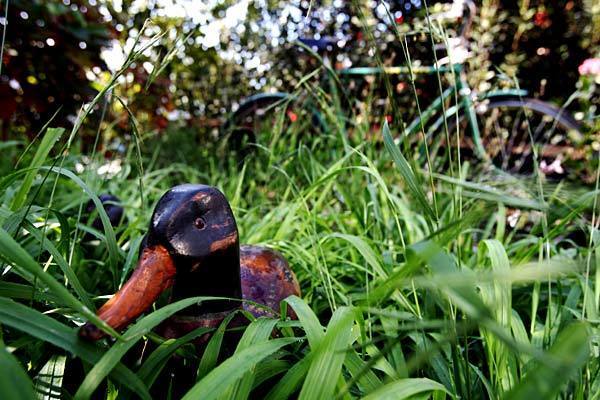
Repeating the theme he developed in his showroom garden, Knibb put a wooden duck in a nest of bromus, sesleria (moor grass) sisyrinchium (blue-eyed grass). (Ann Johansson / For The Times)
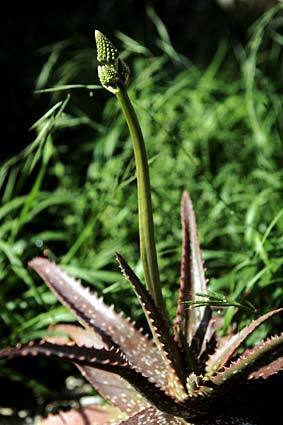
As part of his design signature, Knibb also blends sculptural succulents like this flowering aloe vera in with ornamental grasses. (Ann Johansson / For The Times)
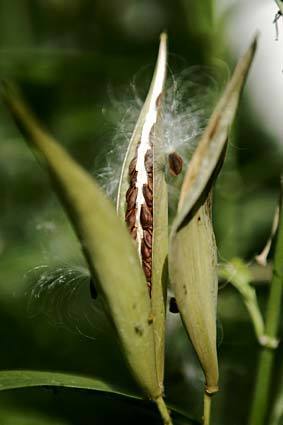
This asclepia, also known as milkweed butterfly bush, yields orange flowers before going to seed with these eye-catching pods. (Ann Johansson / For The Times)
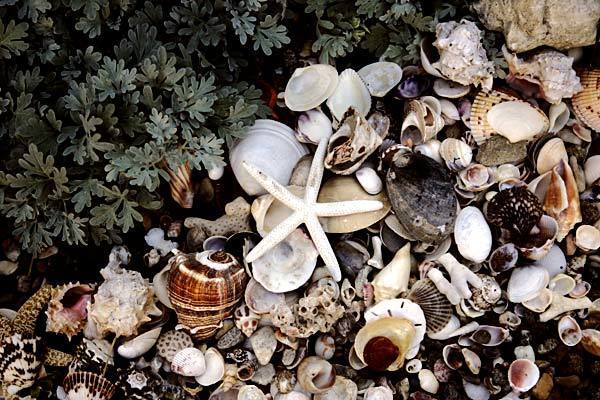
A river of gravel leads from the sidewalk to the front door of Knibbs home. A portion of it is decorated with seashells and artemesia (wormwood or mugwort, an aromatic ingredient used in absinthe and Wicca practices). “It’s beachy,” Knibb says of the combination, “and a little warlock-y.” (Ann Johansson / For The Times)



